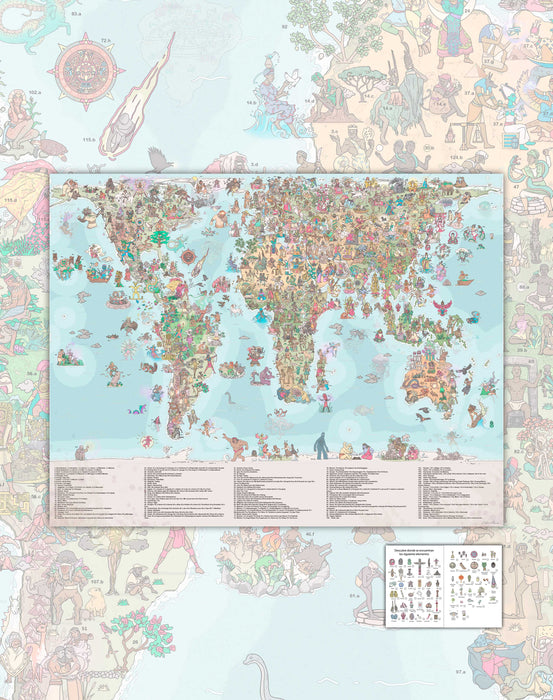
Map of the Beliefs of the World - Art Print
Envío inmediato
Fabricamos con cariño; pide este producto hoy para tenerlo entre el Lunes 22 de Diciembre y Jueves 25 de Diciembre.
Fabricamos con cariño
Pide este producto hoy para tenerlo entre el Martes 23 de Diciembre y Lunes 29 de Diciembre.
PRE-SALE: AVAILABLE FROM JUNE 19
- Size: 90x70cm
- Printing: Canson Art Paper 180gr
- Author : Thomas Moreno
- Shipments : Worldwide rolled in Mappin Box.
A map that explores the spiritual and religious thought of various cultures throughout the planet , which includes: cosmogonic stories, manifestations of nature, governing bodies of a type of order or morality, divinities, mythical heroes and historical figures.
The Argentine illustrator, Tomás Moreno, surprises us with this incredible Map full of cultural information, about which he tells us:
Immerse yourself in Greek mythology, where gods and goddesses exert their influence over the fate of mortals. Glide down the Nile to discover the mysteries of the ancient Egyptian religion and its sacred rituals. Delve into Tibetan Buddhism and the Hindu religion, where spiritual teachings and the search for enlightenment are fundamental pillars. Discover the rich Chinese mythology, spanning from Buddhism to Taoism and Confucianism.
Explore the lands of ancient Mesopotamia, embark on a journey through Japanese Shinto, explore American animism, Siberian shamanism, such as the beliefs of African tribes, Australian megafauna, tales of Meso and South American cultures such as the Mayan Incas and mexica; and many others.
To make this experience an even more exciting adventure, along with the map, a small game is included where you can try to discover where certain elements linked to magic, divination or simply to sacredness are located .
Although we understand that with a few illustrations it is not possible to represent the complete worldview of all these peoples , we believe that this map is a valuable tool to promote plurality, provide diverse perspectives and give visibility to many cultures that are often unknown to us.
In addition, including that many of these cultures did not consider themselves a people with unified or immutable beliefs, for which we had to situate ourselves in specific moments and currents that we consider can illustrate part of their way of interpreting the world around us.














